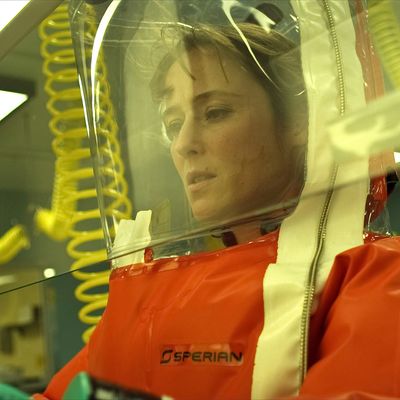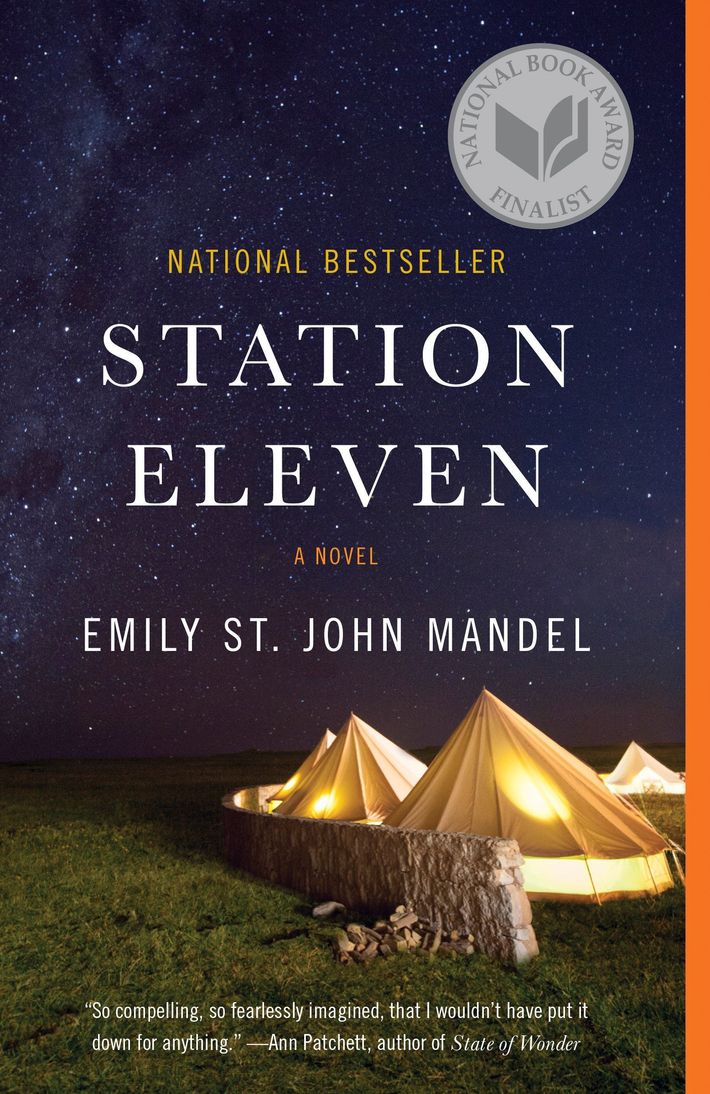
In the last few months, as news of a novel coronavirus became widespread, lots of people decided to watch a movie about a pandemic. Specifically, they watched Contagion, the 2011 Steven Soderbergh movie about a viral outbreak that kills millions of people around the world. It’s been hovering around the top ten of the iTunes rental chart for weeks (it’s currently at No. 13), and it’s shot up the VOD cable rankings. BuzzFeed reported that in December, before the COVID-19 outbreak, Contagion was the 270th most-watched Warner Bros film. So far this year, it’s the second-most-watched.
I’d never seen Contagion, so like the watch-movies-however-you-can pragmatist I am, I hit “rent” on my laptop and watched it from where I was working that day: the public library. Immediately, as Gwyneth Paltrow succumbed to a deadly virus on my screen, I became aware that all around me there were strangers coughing. What was I doing, watching this pandemic movie while coronavirus headlines streamed across my phone? Millions and millions of people die in Contagion. Why on earth did I want to watch it?
I watched it because this current pandemic crisis makes me terrified, and a story about exactly that same thing is one way to grapple with that fear. Pandemic fiction is usually a story of helplessness. The virus is spreading, it’s invisible, and all the usual safeguards have failed. Even when a deadly virus isn’t sweeping the globe, safeguards are never perfect. But in pandemic stories the threat becomes more immediate, universal, and horrible. Viruses are not supervillains with origin stories to explain their villainy, and they’re not serial killers with fetishes. There’s no theory of mind to wrestle with. So pandemic fiction is about how people behave in response to acute, sudden-onset helplessness. When we’re confronted with that helplessness in real life, watching some version of it — any version of it, and ideally one where at least some people survive — is comforting. It’s a model for how we could respond.
Contagion, which divvies the story up among several main characters, has a handful of helplessness-management options. There’s Mitch Emhoff (Matt Damon), whose wife and son were among the first victims of the virus. Emhoff discovers he’s immune, but locks his daughter in the house for months to protect her from infection. There are many characters who work for the CDC or the WHO (played by Marion Cotillard, Laurence Fishburne, Kate Winslet, Jennifer Ehle), who rush into action, assess things as capably as they can, and eventually save the world by developing a vaccine. There’s also a blogger played by Jude Law, who profits from lying about fake cures and inevitably kills people in the process. There are lots of characters who die, including some of the most competent first responders.
It’s a frightening movie! Watching it, I found myself mentally tallying up all the ways its viral outbreak is and is not like the real-world one happening right now — the rate of infection, the percentage of fatalities, the mitigation efforts. But I also started clinging to all the things about Contagion that were counterintuitively soothing — chiefly, not everyone dies. There’s a creeping nightmarish dread to the way Soderbergh shows the viral spread, innocuous shots of hands touching cocktail glasses and a man grabbing the handle inside a bus, that are all the more frightening because of how ubiquitous they are. But then, after the horror kicks in, the mechanism for fixing it also swiftly clicks into action.
Contagion is fiction, but the appeal of watching a fictional pandemic during a real pandemic is not about the fact that the fictional version is fake. The fictional version lets us feel some small piece of what the real version could feel like. And then, because it’s a story, it gives viewers the comfort of turning the fear into an arc. Yes, characters in Contagion feel helpless, and yes, some of them get sick and die. But the story doesn’t end with death. It ends with the discovery of a vaccine, and the world slowly putting itself back together. As a parallel to the real world right now, that’s a specific kind of comforting reminder that coronavirus will not cause the apocalypse. Even if the resolution is bleak, stories tend to give meaning to the feeling of helplessness, and to find characters who do have some agency. In Contagion, that’s Jennifer Ehle as a CDC doctor, valiantly finding a vaccine, but it’s also Matt Damon, stubbornly quarantining his daughter to keep her safe.
There are other shapes to pandemic stories. Contagion offers an optimistic version: “See, things get very bad in this movie, but even still, they find a vaccine! Most people survive! It’s gonna be okay.” The model offered by Emily St. John Mandel’s post-apocalypse novel Station Eleven — and other dystopian pandemic fiction that’s suddenly surged in popularity, like Dean Koontz’s The Eyes of Darkness and Stephen King’s The Stand — is more of a pessimistic type. But pandemic stories with more miserable, fully dystopian premises can also be soothing. Comfort comes from the expectation that the fiction will have a shape, some kind of resolution. The virus comes, society collapses, most of the human population dies. But still, still, some people survive and life goes on.
Many zombie stories are also pandemic stories. The first season of Walking Dead ends with the characters struggling to reach the CDC, hoping that someone there will have a cure. In the case of zombie stories, though, the sense of helplessness usually gets diverted into violence. A virus that makes your loved ones cough is unseen and deadly, and there’s nothing much you can do about it. But a zombie? You can shoot a zombie in the head.
There are even more models of pandemic stories, too. In many of them, the sickness becomes a metaphor for other things. In Camus’s The Plague, it’s the absurdity of all life; in Ling Ma’s Severance, it’s consumerism and capitalism. Or, like zombie stories, something else becomes the metaphorical embodiment of the pandemic (see: Edgar Allen Poe’s “Masque of the Red Death”). But in each case, the pandemic story is some iteration of helplessness and agency, and the fiction of it means that the worst of the helplessness is contained in some way. Sometimes the containment comes by focusing on competent characters who save the world, and sometimes the thing that keeps the helplessness in check is the simple promise of being a story. It’s the same terror, but it’s set inside an enclosed narrative frame.
One of the oldest plague stories is The Decameron, published in Italy around 1353, about a small group of people who flee Florence to escape the Black Death and spend two weeks telling each other stories to distract from the horror around them. Their stories are not about the plague, mostly. They’re love stories and tragedies and political commentaries and jokes. But the premise relies on the same central idea, that one of the first responses to helplessness is to find a way to tell stories about it. This is why I watched Contagion, and I suspect why lots of other people did too. Rather than uncontrolled, random, indiscriminate plague, a story about a plague will have characters, and a shape, and an ending. Those are the things that make all stories — even terrifying pandemic stories — feel comforting.



